Top 10 High Fat Foods to Avoid
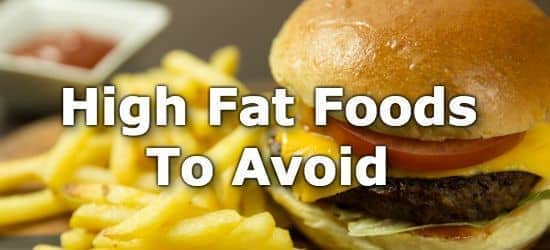
Fats act as building blocks for cell membranes throughout the body, support neurological function, and act as an energy store. They’re also necessary for absorbing certain vitamins and other nutrients from food. (1)
While there are healthy sources of fat you should be eating, all the foods on this list should be avoided, or at least limited to a very occasional treat. These foods contain few to no healthy nutrients, and many have high levels of sugar or salt.
Each gram of fat contains 9 calories, making it the most calorie-dense nutrient, and eating too much can lead to weight gain. (2,3)
Of all the fats listed below, trans-fats are the most damaging to health, and should be avoided as much as possible. Read ingredient labels and avoid any food that has trans fats listed on the label, or that contains partially hydrogenated fats or oils (which contain trans fats). (4,5)
High-fat foods to avoid include fast foods, whipped cream, fatty meats, fried foods, fatty snacks, processed meats, desserts, fatty salad dressings, animal fats, and trans-fats. The daily value (DV) for fat is 78 grams per day. (6)
For information on healthy fats, see the articles on healthy high fat foods and foods high in omega 3 fats.
List of Unhealthy High Fat Foods
-
 1. Fast Foods (Burger King Double Whopper With Cheese) + Add
1. Fast Foods (Burger King Double Whopper With Cheese) + Add
Fat
per BurgerFat
per 100gFat
per 200 Calories68g
(87% DV)17g
(22% DV)13g
(16% DV)More Fast Foods High in Fat
- 64g (82% DV) in McDonald's Deluxe Breakfast
- 49g (63% DV) in a Taco Bell Taco Salad
- 37g (48% DV) in a Croissant with Egg, Cheese, and Sausage
See all fast foods high in fat.
-
 2. Whipped Cream + Add
2. Whipped Cream + Add
Fat
per Cup WhippedFat
per 100gFat
per 200 Calories37g
(48% DV)31g
(40% DV)21g
(27% DV)More High Fat Dairy to Avoid
- 21g (27% DV) in a 100 gram ice-cream cone
- 11g (14% DV) per oz of whipping cream
- 11g (14% DV) per cup of eggnog
-
 3. Beef Short Ribs + Add
3. Beef Short Ribs + Add
Fat
per 3ozFat
per 100gFat
per 200 Calories36g
(46% DV)42g
(54% DV)18g
(23% DV)More High Fat Meats
- 41g (52% DV) in a 5oz rack of pork ribs
- 36g (46% DV) per 3oz of beef short ribs
- 32g (41% DV) in a 6oz pork chop with fat
- 20g (26% DV) in a 5oz roast chicken thigh
- 14g (18% DV) in a 3oz roasted chicken wing
See all meats high in fat.
-
 4. Fried Foods (Fried Chicken) + Add
4. Fried Foods (Fried Chicken) + Add
Fat
in 1 Chicken BreastFat
per 100gFat
per 200 Calories35g
(45% DV)17g
(21% DV)12g
(16% DV)More Fried Foods High in Fat
- 9g (11% DV) in 10 medium fired onion rings
- 3.5g (5% DV) in 10 French fries
-
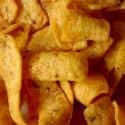 5. Fatty Snacks (Corn Chips) + Add
5. Fatty Snacks (Corn Chips) + Add
Fat
per CupFat
per 100gFat
per 200 Calories29g
(38% DV)33g
(43% DV)12g
(15% DV)More Unhealthy High Fat Snacks
- 10g (13% DV) per oz of potato chips (crisps)
- 9g (11% DV) per oz of plantain chips
See all the list of all high fat snacks.
-
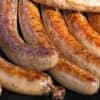 6. Processed Meats (Brautwurst Sausage) + Add
6. Processed Meats (Brautwurst Sausage) + Add
Fat
per SausageFat
per 100gFat
per 200 Calories25g
(32% DV)29g
(37% DV)18g
(22% DV)More High Fat Processed Meats
- 39g (50% DV) per 3oz of pepperoni
- 25g (32% DV) in a 3.5oz slice of bologna
- 13g (16% DV) in 3 slices of bacon
-
 7. Desserts (Dulce De Leche) + Add
7. Desserts (Dulce De Leche) + Add
Fat
per CupFat
per 100gFat
per 200 Calories22g
(29% DV)7g
(9% DV)5g
(6% DV)More Confections High in Fat
- 32g (41% DV) in 1/2 cup of chocolate mousse
- 28g (35% DV) in a slice of chocolate cake with frosting
- 21g (27% DV) in a 4oz cream filled eclair
- 13g (16% DV) in a piece of blueberry pie
See all sweets high in fat, and all baked foods high in fat.
-
 8. Salad Dressing + Add
8. Salad Dressing + Add
Fat
per 2fl OzFat
per 100gFat
per 200 Calories19g
(24% DV)32g
(40% DV)20g
(25% DV)Avoid creamy dressings and simply use olive oil, lemon juice, vinegar, and/or fresh herbs to add flavor to your salads. Be sure to watch the sugar content of low-fat dressings.
-
 9. Animal Fat (Lard) + Add
9. Animal Fat (Lard) + Add
Fat
per TblspFat
per 100gFat
per 200 Calories13g
(16% DV)100g
(128% DV)22g
(28% DV)Choose plant oils high in omega 3 fats over animal fats. Fish oils are also a good choice.
-
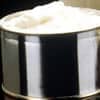 10. Transfats (Margarine) + Add
10. Transfats (Margarine) + Add
Fat
per TblspFat
per 100gFat
per 200 Calories11g
(15% DV)81g
(103% DV)23g
(29% DV)No fat is more damaging to cardiovascular health than trans-fats. Trans-fats became popular for extending the shelf life of foods, because they last for a long time without going rancid. However, they are slowly being phased out of use due to their damaging health effects. (4,5)
Check ingredient labels and avoid any foods with trans-fats or partially hydrogenated fats. While margarine is listed here, not all margarine is high in trans-fats. Again, check ingredient labels.
Printable One Page Sheet
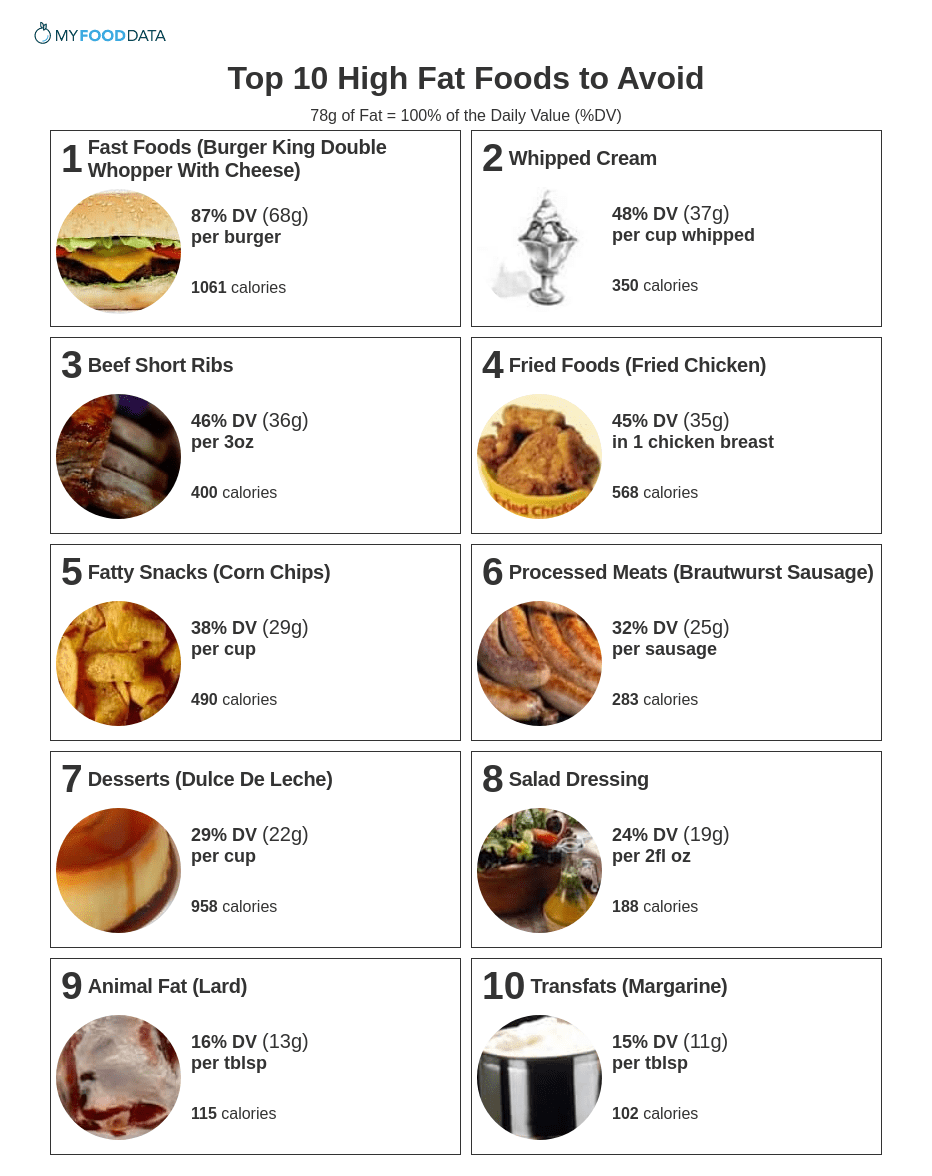
From the Nutrient Ranking Tool
Use the ranking tool links below to select foods and create your own food list to share or print.
- Foods High in Fat
- Foods Low in Fat
- Vegetables High in Fat
- Fruits High in Fat
- Vegetarian Foods High in Fat
- Nuts High in Fat
- Grains High in Fat
- Beans High in Fat
- Dairy High in Fat
- Breakfast Cereals High in Fat
- Fast Foods High in Fat
View more nutrients with the nutrient ranking tool, or see ratios with the nutrient ratio tool.
Related
Data Sources and References
- Alkaade S, Vareedayah AA. Fat digestion and absorption: Normal physiology and pathophysiology of malabsorption, including diagnostic testing Am J Manag Care. 2017 Jul;23(12 Suppl):S203-S209. 28727474
- Astrup A. The role of dietary fat in obesity Int J Obes Relat Metab Disord. 1993 Dec;17 Suppl 3:S32-6; discussion S41-2. 8124398
- Cao YJ, Wang HJ, Zhang B, Qi SF, Mi YJ, Pan XB, Wang C, Tian QB. Elevated Fat Intake Increases Body Weight and the Risk of Overweight and Obesity among Chinese Adults: 1991-2015 Trends Br J Nutr. 2020 Oct 14;124(7):715-728. doi: 10.1017/S0007114520001579. Epub 2020 May 7. 32378502
- Hayes KC, Pronczuk A. New data on harmful effects of trans-fatty acids J Am Coll Nutr. 2010 Jun;29(3 Suppl):253S-284S. doi: 10.1080/07315724.2010.10719842. 20823487
- Remig V, Franklin B, Margolis S, Kostas G, Nece T, Street JC. Trans fatty acids and lipid profile: A serious risk factor to cardiovascular disease, cancer and diabetes J Am Diet Assoc. 2010 Apr;110(4):585-92. doi: 10.1016/j.jada.2009.12.024. 20338284
- U.S.FDA - Daily Value on the New Nutrition and Supplement Facts Labels
Simplify Nutrition Tracking with MyFoodData!
Speedy Tools and Detailed Data FREEEasily analyze your meals to find the best foods for your goals.
✅ Use our recipe nutrition calculator and nutrition comparison tool.
✅ Access expert nutrition data tools and in-depth articles.
✅ Log foods and organize your recipes with a free account.


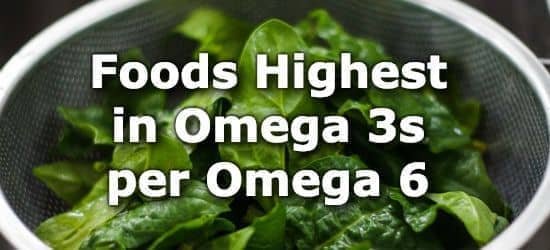 Next ➞
Next ➞
